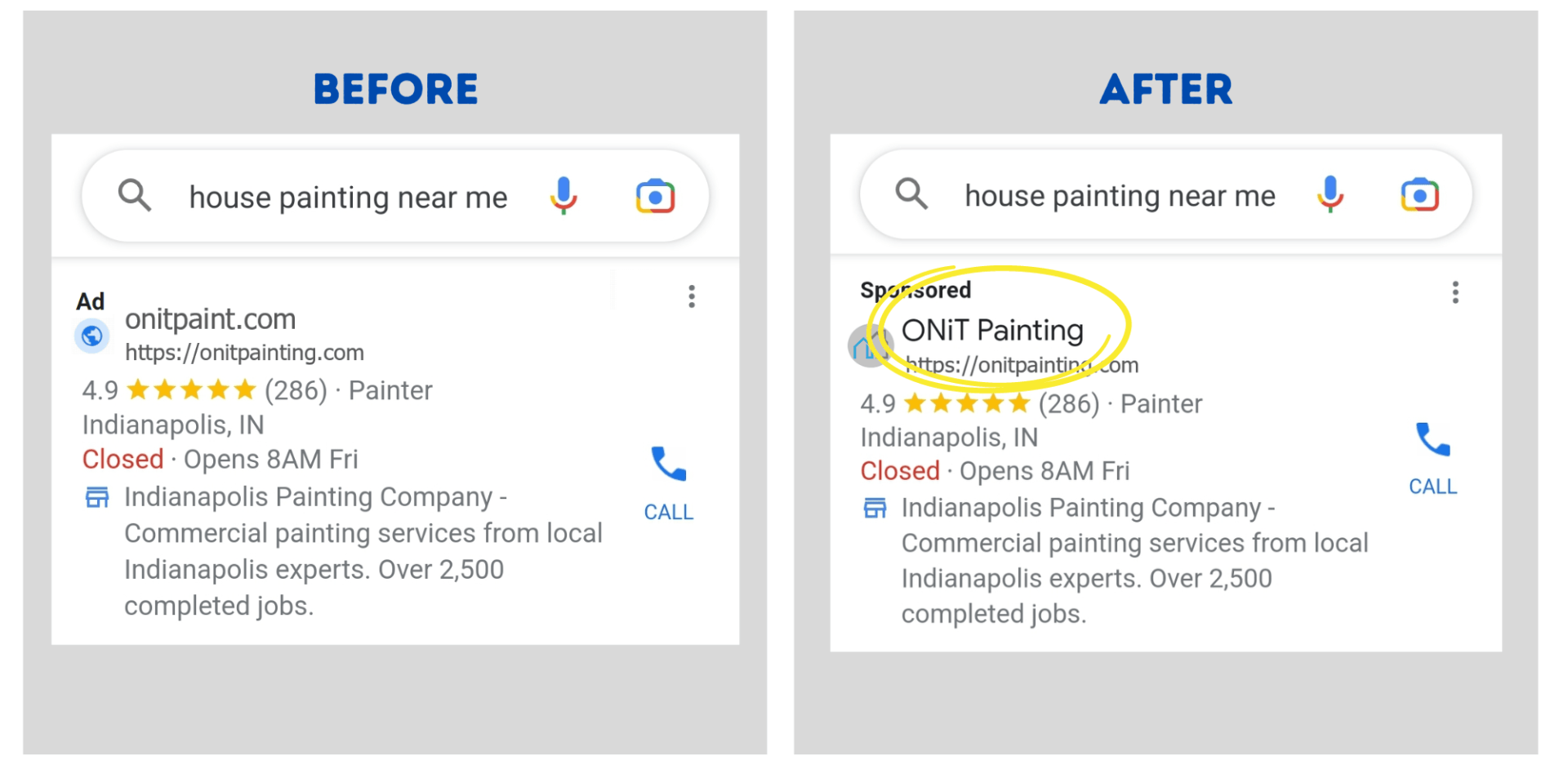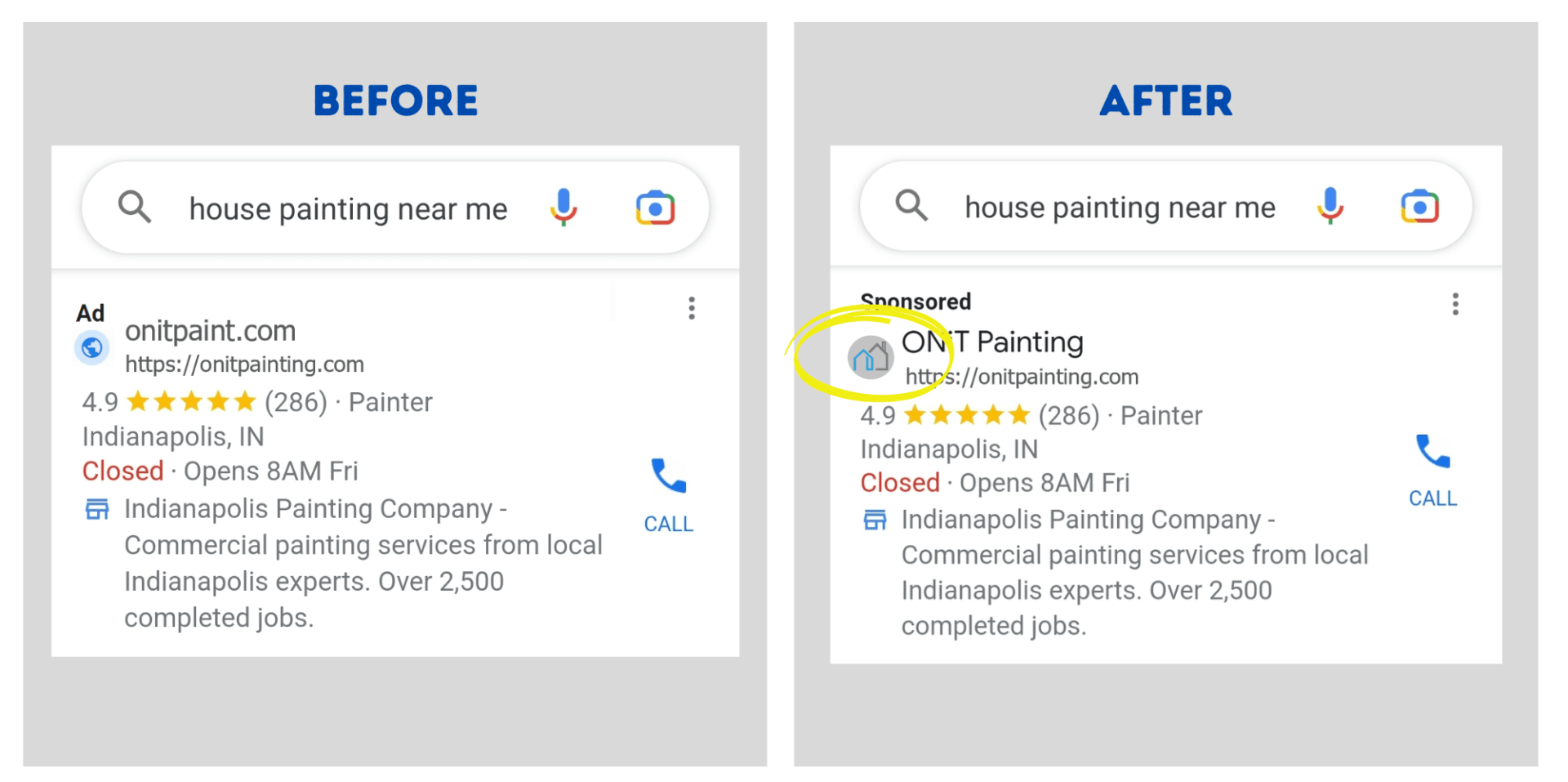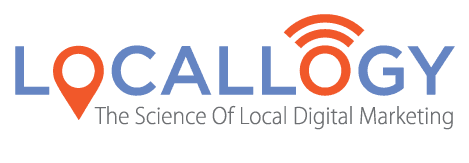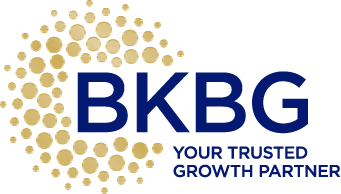How Google is Changing Your Paid Ads
If you’re involved with digital marketing, even peripherally, then you know Google makes regular updates to its search algorithm, user interface, core features, and so on. In fact, Google makes thousands of updates every year.
Early this summer, Google announced a series of updates planned for rollout during the third and fourth quarters of the year. Since that announcement, we’ve seen several updates launched, including the helpful content update.
And now, it’s time for another: the Google Ads update.
In this update, Google is changing the way paid ads are displayed in search results. The idea here is pretty simple—make paid ads more distinguishable from organic search results.
The update will accomplish this in a few ways.

Google Ads Will Display Business Names
Prior to this update, your website’s URL would appear at the top of your paid ad. Now, the business name is clearly displayed on the first line.

This helps users easily identify the company whose link they're clicking. From a user perspective, this is particularly helpful when a URL isn’t easy to quickly decipher or doesn’t otherwise line up with the business name. For example, takearecess.com for beverage company Recess or hioscar.com for Oscar Healthcare.
From a business standpoint, this helps prevent paying per-click charges for unintentional clicks. Users now clearly see the name of your company in addition to your URL.
Google Ads Will Display Business Logos
Previously, the default globe icon would appear to the left of paid ads. Now, the business logo will appear instead.

For users, this is just another step in helping identify paid ads from organic results, which are often in plain text and many times, don’t have any icon at all.
From a branding standpoint, the benefit to businesses is obvious—their logo has the opportunity to make a visual impression on the user right there on the search results screen.
Paid Ad Tags Will Change
Perhaps the most interesting aspect of this update is Google’s decision to replace the “Ad” tag with a “Sponsored” tag in the same upper left-hand corner position.

If the goal is to quickly differentiate paid ads from organic results, the “Ad” tag would seem to already do the job perfectly. But most Google experts agree the logic behind this change is fairly simple: “sponsored” is simply a longer word that is synonymous with “ad” and less likely to get lost in other text on the page.
Mobile Updates, Only (For Now)
The Google Ads update has been introduced on mobile only, for the time being. No word yet when the desktop update will launch, but most in the industry predict it will probably happen soon.
You can read more about this update’s features, when and how it’s being implemented, and how you can update your business’s paid ads on Google’s
Ads Help page.
Get the Latest Content in Your Inbox
Want to be the first to know about new content? Sign up to get our weekly blog posts sent to your email!





